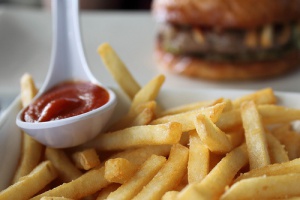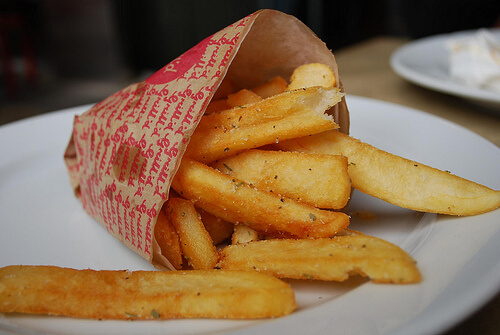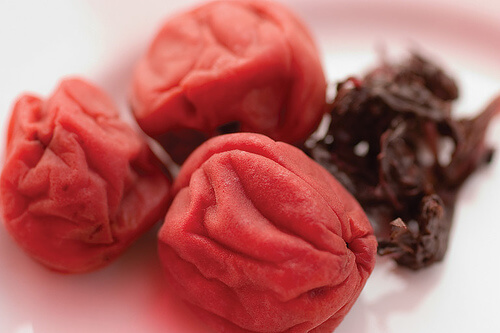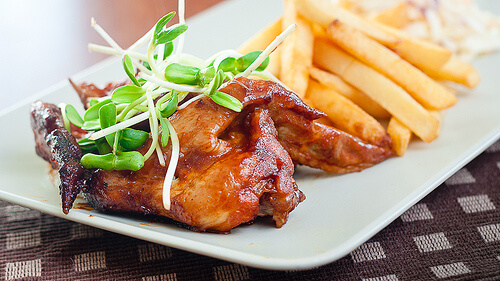Healthy and Light French Fries: How to Make Them

Who doesn’t like french fries? According to how they have been cooked, however, they can be very harmful to your health. Unfortunately, they tend to be made with low quality oil that has been used and reused many times, always at high temperatures. If only we could make healthy and light french fries!
Nonetheless, you don’t have to stop eating them. In this article, we will explain how you can make them at home three different ways so that they are healthier and lighter than usual—with less harmful effects than they tend to have.
French Fries that Are Sold to Us
To make healthy and light french fries, the first step is to make them at home yourself, because it is the only way to guarantee their quality. This will allow you to eat them frequently with other dishes. Try to avoid them as much as possible when eating out.
French fries normally sold at restaurants or fast food chains are harmful for the following reasons:
- Fries are made with low quality oils (those called cooking oils, which have transgenic soy and other vegetable origin oils) that turn into trans fats when cooked at high temperatures, which will cause toxicity in your body. They also tend to be used many times over.
- Fries have a very high fat content, because they are fried in a lot of oil.
- The potato is in reality a mixture of potato puree with other unhealthy ingredients.
- Contain a lot of refined salt
All of these characteristics contribute to poor health:
- Increase cholesterol and triglyceride levels
- Contribute to obesity and cellulite
- Overwork your liver and kidneys
- Worsen blood pressure and fluid retention
- Cause acidity, which is the origin of diseases

Fundamental Steps for Healthy and Light French Fries
To make healthy and light french fries, you should follow these initial steps:
- Get high quality potatoes, organic if possible
- Use olive oil
- Season with sea salt, but not too much
- Use teflon free containers, like ceramic, glass, stainless steel, cast iron, etc.
1. French Fries without Acid
A culinary trick that comes from the East consists of adding a couple of umeboshi plums to the oil to remove a large amount of the acidity that foods acquire when you fry them. This is an exceptional medicinal food with a lot of beneficial properties.
These plums absorb part of the toxicity without changing the flavor. You should not eat the plums that have been fried, although you can eat one after a meal to counteract the harmful effects.

2. Baked French Fries
This is a great way to make healthy and light french fries. Cut potatoes in strips, just like you do when you fry them, and put them on a baking sheet. Before baking them, be sure to cover them with olive oil so they come out crunchy.
In this way you will make baked french fries that will be identical to the fried kind, but with a lot less oil.
3. Cooked and Fried Potatoes
Another way to get potatoes to not absorb as much oil consists of boiling them first for 10 minutes when they are cut into strips, so that they lose their hardness. After, let them drain well so that they don’t lose the oil and fry them until they get their usual consistency.
Nutritional Suggestions
Potatoes are a starch, which is why we recommend always combining them with a vegetable (vegetables, salads, fruits) and protein (meat, fish, egg, legume) for better digestion. Also, if you combine them, the effects of consuming them will be much more beneficial for your body.
In turn, we don’t recommend combining them with other starches or flour, like sandwiches, pizza, pasta, etc. because that will make digestion more difficult, overwork your body, and contribute to the creation of undesirable fat deposits.

Do You Know About Fried Apples?
Lastly, we will make an even healthier suggestion that will surprise your entire family. Cut an apple in strips, as if it were a potato, and fry them the same way, adding salt as well. Its sweet flavor and refreshing texture will turn this recipe into a very original snack.
Images courtesy of avlxyz, stevebott, mismisimos and Leszek.keszcysnki
All cited sources were thoroughly reviewed by our team to ensure their quality, reliability, currency, and validity. The bibliography of this article was considered reliable and of academic or scientific accuracy.
- Kostik, V., Memeti, S., & Bauer, B. (2013). FATTY ACID COMPOSITION OF EDIBLE OILS AND FATS. Hygienic Engineering and Design Original.
- Bhardwaj, S., Passi, S. J., & Misra, A. (2011). Overview of trans fatty acids: Biochemistry and health effects. Diabetes and Metabolic Syndrome: Clinical Research and Reviews. https://doi.org/10.1016/j.dsx.2012.03.002
- Micha, R., & Mozaffarian, D. (2008). Trans fatty acids: Effects on cardiometabolic health and implications for policy. Prostaglandins Leukotrienes and Essential Fatty Acids. https://doi.org/10.1016/j.plefa.2008.09.008
- Ginter, E., & Simko, V. (2016). New data on harmful effects of trans-fatty acids. Bratislava Medical Journal. https://doi.org/10.4149/BLL_2016_048
This text is provided for informational purposes only and does not replace consultation with a professional. If in doubt, consult your specialist.








